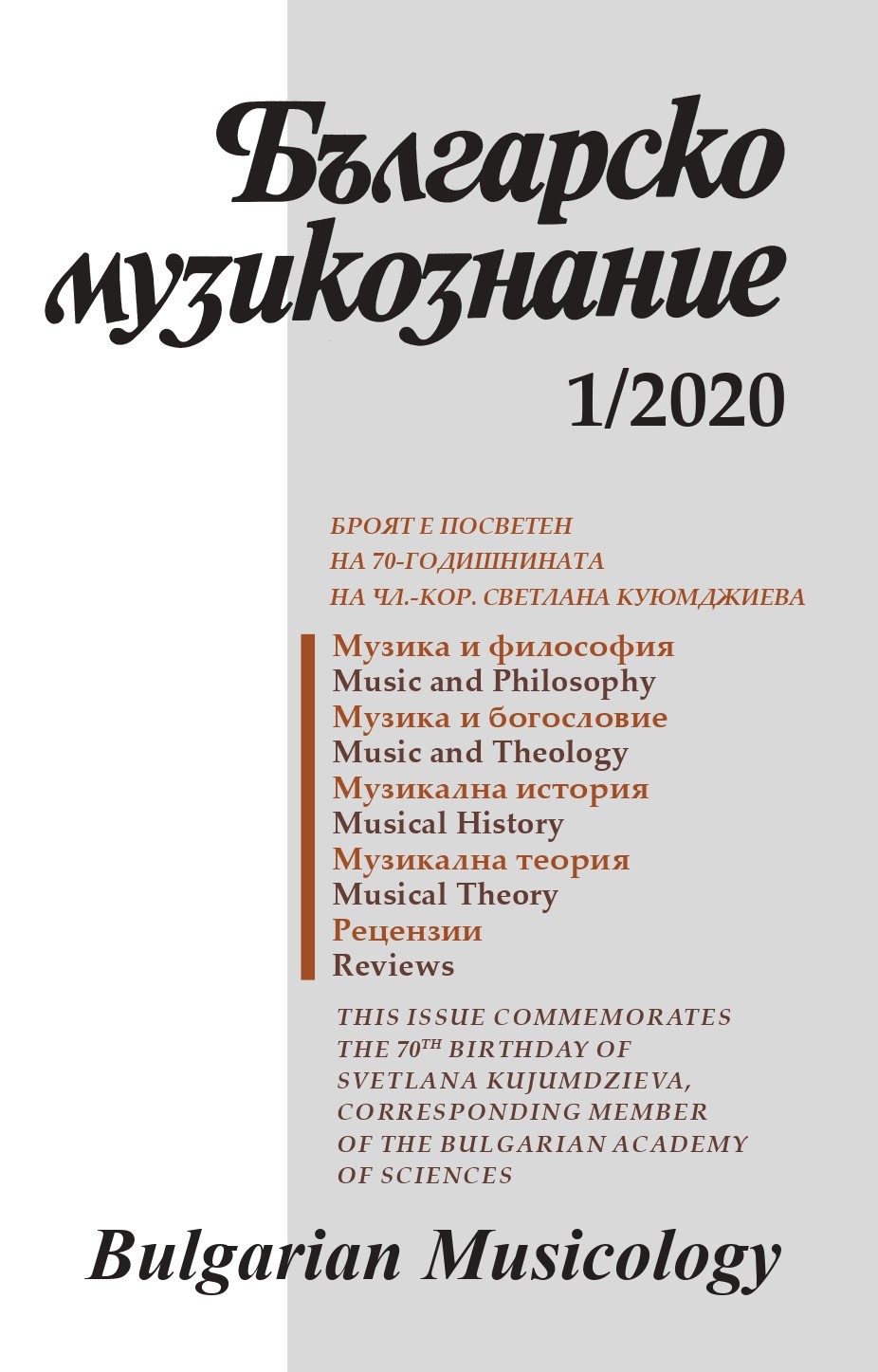Късни лютневи версии на три шансона от Клоден дьо Сермизи (върху ръкописа на Емануел Вурстисен CH-BU MS. F.IХ.70)
Late Lute Versions of Three Chanson by Claudin de Sermisy (from Wurstisen Lute Book CH-BU MS. F.IХ.70)
Author(s): Yavor GenovSubject(s): History, Fine Arts / Performing Arts, Music, Modern Age, 16th Century
Published by: Институт за изследване на изкуствата, Българска академия на науките
Summary/Abstract: The arrangements of vocal polyphonic music for instruments emerges as an essential part of the repertory for the latter during the 16th century. Apart from the theoretical grounds for this statement, it is also supported by the contents of lute anthologies. Emanuel Wurstisen’s lute manuscript is not an exception – three out of eight books of his anthology are dedicated to arrangements of vocal music. A significant part of these arrangements is based on secular models – French chansons, Italian madrigals or German lieder. Their variety is determined by the nature of the genres themselves, but also by the broad temporal frame of origin. One can find pieces coming from the first decades of the century onward to the direct contemporaneity of the scribe. Among the earliest vocal titles in the Wurstisen lute book are three chansons, composed by Claudin de Sermisy. Il est jour, Laguir me fais and Orcum bien (O combien est malhenreulx) were originally published between the late 1520s and 1540s. Lute intabulations for some of them appeared almost immediately. Is it the case that Wurstisen’s versions reflect some anachronistic tendency, or rather a special attitude to pieces with a “classical” significance? Could it be possible to trace out the origin of the intabulations? Were they copied from another lute source and is it plausible to assume an authorship by Wurstisen for some of the arrangements? How were the vocal models transformed into lute pieces? What approaches to their originals were applied, how was the matter of musica ficta treated, and what kind of diminutions were implanted into the original structure? All these points set the frame and direction of the present study. It suggests that the three chansons are not equally widespread and wellknown among lute books. Two of them emerge from a number of sources, while Il est jour appears rather seldom. The study shows that the three Wurstisen’s versions were not copied from any of the known lute intabulations, and the style of the arrangements indicates that they are not homogeneous. As Sermisy’s music circulated repeatedly under incorrect or unmentioned authorship for decades (among some lute sources as well), this paper suggests that if a certain attitude to “classical authority” was presented by Wurstisen, it could possibly be associated with some well-known titles from the available lute books, rather than their vocal origins and authors belonging to earlier generations and traditions.
Journal: Българско музикознание
- Issue Year: 2020
- Issue No: 1
- Page Range: 92-109
- Page Count: 18
- Language: English, Bulgarian
- Content File-PDF

